wikiHow is a “wiki,” similar to Wikipedia, which means that many of our articles are co-written by multiple authors. To create this article, 112 people, some anonymous, worked to edit and improve it over time.
There are 9 references cited in this article, which can be found at the bottom of the page.
This article has been viewed 3,397,877 times.
Learn more...
The apostrophe is used for two reasons: to show that certain letters in a contraction are missing, and to indicate ownership. The rules for apostrophes vary with the type of word. Apostrophes help make your writing clear and short.
Steps
Apostrophe Examples
Using Possessive Apostrophes
-
1Use an apostrophe to indicate ownership by a proper noun. An apostrophe with an "s" after a proper noun indicates that the person, place or thing owns whatever noun follows his or her name. For example, "Mary's lemons." We know the lemons belong to Mary because of the 's. Other examples include "China's foreign policy" and "the orchestra's conductor."[1]
- Ownership with certain proper nouns can be tricky. "Sunday's football game" is not technically correct (because Sunday is incapable of ownership) but it's perfectly acceptable to say and write. "A hard day's work" is likewise perfectly correct, even though the day is incapable of ownership.
-
2Be consistent when you use apostrophes after words that end in "s." When someone's name ends with an "s," it is acceptable to use an apostrophe without an "s" to show ownership, but linguists with the Chicago Manual of Style, along with others, prefer to add an "s" after the apostrophe.[2] [3]
- Note the difference in usage:
- Acceptable: Jones' house; Francis' window; Enders' family.
- Preferred: Jones's house; Francis's window; Enders's family.
- Whichever style you prefer using, be consistent with it. It doesn't really matter which policy you adopt, as long as you adopt it consistently.
Advertisement - Note the difference in usage:
-
3Don't use an apostrophe to indicate ownership when using "it". "China's foreign policy" is correct, but say your reader already knows you're talking about China, and you start referring to the country as "it." If you were to reference something China owned in this way, you'd say "its foreign policy."[4]
- The reason for this is to avoid confusion between "its" used for possession and "it's" used as a contraction of "it is." If you're not sure whether to use an apostrophe or not, try saying the sentence with "it is" or "it has." If it doesn't make sense (the way that "it is foreign policy" cannot substitute for "China's foreign policy"), then drop the apostrophe.
-
4Use apostrophes to indicate ownership by a plural noun. One common trip-up on apostrophe usage for a plural group occurs when people want to discuss what a family owns. For instance, say the Smart family lives across the street from you and owns a boat. The boat is "the Smarts' boat," not "the Smart's boat." Because you are talking about all of the members of the Smart family, you would start with "Smarts." Because all the Smarts (presumably) own the boat, you add the apostrophe after the "s."[5]
- If the family's last name ends in "s," make it plural before adding an apostrophe. For instance, if you wanted to discuss the Williams family, they would become "the Williamses" in a plural sense. If you wanted to reference their dog, you'd say "the Williamses' dog." If the last name seems awkward to say that way, sidestep the issue by saying "the Williams family" and "the Williams family's dog."
- If you're listing who owns an object, know where to put the apostrophe. For instance, if both John and Mary own a cat, you would write "John and Mary's cat" — not "John's and Mary's cat." "John and Mary" is a cohesive noun phrase, and therefore only needs one apostrophe.
Avoiding Apostrophes for Plurals
-
1In general, don't use an apostrophe to indicate a plural. The wrong use of an apostrophe to form the plural is called the greengrocer's apostrophe, since grocers are often the worst (or at least the most visible) offenders.[6] If you have more than one apple, then write apples, not apple's.
- An occasional exception to this use is in the case of making a single letter plural. Therefore, Why are there so many i's in the word "indivisibility"? is correct, depending on who you ask.[7] This is simply for clarity reasons, so the reader does not mistake it for the word "is." However, in modern usage, the preference is to avoid inserting an apostrophe and instead surround the single letter in quotation marks before pluralizing it: Why are there so many "i"s in the word "indivisibility"?
- Avoid the problem altogether with small numbers by spelling out the word: "ones" instead of "1's," "fours" instead of "4's" or "nines" instead of "9's." Only spell out words of numerals that are ten or lower.
-
2Know how to use apostrophes for acronyms and years. Say you use an acronym for a noun, like CD. To make CD plural, use "CDs," not CD's." The same logic goes for years — instead of writing "Spandex was popular in the 1980's," use "1980s."[8]
- The only time an apostrophe should be used in a year is if it's standing in for omitted numbers. For instance, if you wanted to shorten the year 2005, you could write '05. In this case, the apostrophe is essentially acting like it does in a contraction and serving as shorthand.
Using Apostrophes in Contractions
-
1Use apostrophes in contractions. Sometimes, especially in informal writing, apostrophes are used to indicate one or more missing letters. For example, the word "don't" is short for "do not"; other examples include "isn't," "wouldn't," and "can't." Contractions can also be made with the verbs "is," "has," and "have." For example, we can write "She's going to school" instead of "She is going to school"; or "He's lost the game" instead of "He has lost the game."[9]
-
2Be aware of the its/it's trap. Use an apostrophe with the word "it" only when you want to indicate a contraction for "it is" or "it has. It is a pronoun, and pronouns have their own possessive form that does not use an apostrophe. For example, "That noise? It's just the dog eating its bone." This may seem confusing, but it follows the same pattern as other possessive pronouns: his, hers, its, yours, ours, theirs.[10]
-
3Avoid using contractions that don't exist. Many people use informal contractions such as "shouldn't've" or "'ought." These contractions aren't real contractions, so avoid using them in formal writing. Another mistake to avoid is using people's names in contractions. For example, if you use "Bob's" as a contraction of "Bob is," then that's not correct. "Bob's" is supposed to be a possessive, not a contraction. It's okay to use pronouns in contractions such as "he's" or "she's."
Our Most Loved Articles & Quizzes
Community Q&A
-
QuestionDo I use an apostrophe in a name when saying something belongs to them? For example: "Jessica's Art Folder." Or is it "Jessicas Art Folder"?
 DonaganTop AnswererUse the apostrophe.
DonaganTop AnswererUse the apostrophe. -
QuestionI'm making a sign for my home which will read The Porters, est. 1999. Apostrophe or no apostrophe in Porters?
 DonaganTop AnswererIf you're referring to the family, you don't need the apostrophe. If you're referring to the house, spell it Porters'.
DonaganTop AnswererIf you're referring to the family, you don't need the apostrophe. If you're referring to the house, spell it Porters'. -
QuestionDo you put an apostrophe after last names on a plaque? Is it The Millers, The Millers', or The Miller's?
 Community AnswerNo apostophe needed: The Millers, The Miller Family, or The Miller Home are all good options. The Millers' Home is technically correct as well. If your last name ends in S, Z, or CH, add an "es" at the end instead of an s: The Martinezes.
Community AnswerNo apostophe needed: The Millers, The Miller Family, or The Miller Home are all good options. The Millers' Home is technically correct as well. If your last name ends in S, Z, or CH, add an "es" at the end instead of an s: The Martinezes.
Warnings
- Throwing in apostrophes willy-nilly quickly shows that the writer does not understand the rules about possessives, contractions, and plurals. If in doubt, err on the side of leaving out the apostrophe.⧼thumbs_response⧽
- Don't put an apostrophe within your name on your return address label. If your surname is "Greenwood," "The Greenwoods" is correct, while "the Greenwood's" is incorrect. "The Greenwoods" indicates the residence of more than one person with the surname Greenwood, not some sort of possession.⧼thumbs_response⧽
- When a word ends in "y," as in "try," take extra care when changing the verb form. For example, "try" does not become "try's". "Tries" is correct.⧼thumbs_response⧽
- Do not use apostrophes or quotation marks for emphasis. For example, take a billboard that says: Joe Schmo, the "best" realtor in town! It makes the word "best" appear sarcastic, and untrue, rather than emphasized.⧼thumbs_response⧽
- Never write "Her's." Her's is not a word, just as you would not write "him's". Recall that possessive pronouns do not need an apostrophe: his, hers, its, yours, ours, theirs.⧼thumbs_response⧽
References
- ↑ https://www.sussex.ac.uk/informatics/punctuation/apostrophe/possessives
- ↑ http://www.chicagomanualofstyle.org/qanda/data/faq/topics/PossessivesandAttributives.html?old=PossessivesandAttributives01.html
- ↑ http://www.bartleby.com/141/strunk.html#1
- ↑ https://www.suu.edu/writingcenter/undergraduate/pdf/tip-sheets/apostrophe.pdf
- ↑ https://www.sussex.ac.uk/informatics/punctuation/apostrophe/possessives
- ↑ https://www.suu.edu/writingcenter/undergraduate/pdf/tip-sheets/apostrophe.pdf
- ↑ http://www.english-test.net/forum/ftopic14784.html
- ↑ https://www.e-education.psu.edu/styleforstudents/c2_p3.html
- ↑ https://www.sussex.ac.uk/informatics/punctuation/apostrophe/contractions
About This Article
To use apostrophes, add an apostrophe followed by an "s" after the name of a person or place to indicate ownership. For example, you could write "Mary's lemons." In the case of plural ownership, add an apostrophe after the "s" instead, as in "the Smarts' boat." You can also use apostrophes for other contractions, including "don't" for "do not," and "isn't" for "is not." However, you should avoid using an apostrophe with the word "it" so you don't get confused with "it's," which is an abbreviation for "it is." For tips on how to write an apostrophe in cursive or how and avoid non-existent contractions, read on!
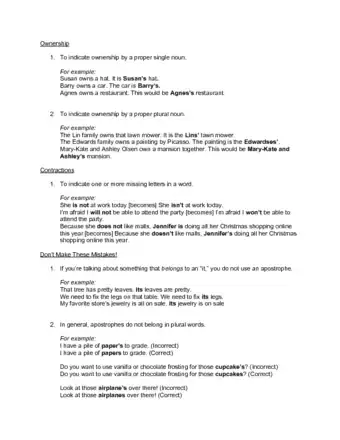

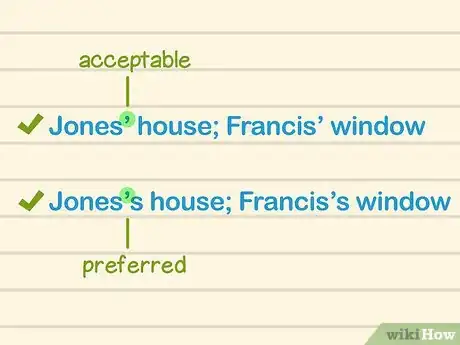
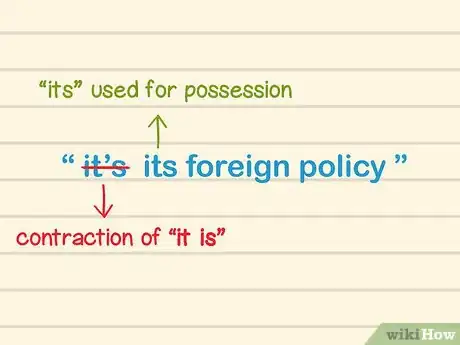
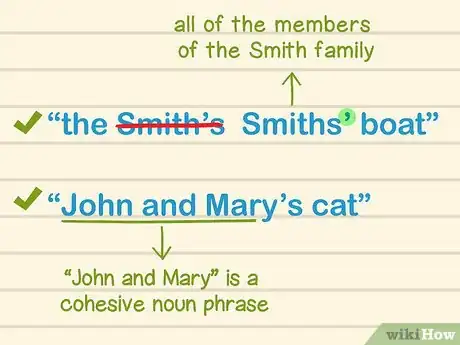
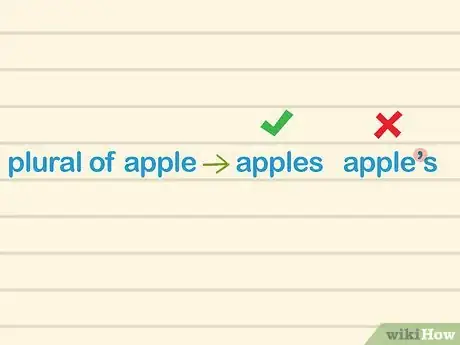


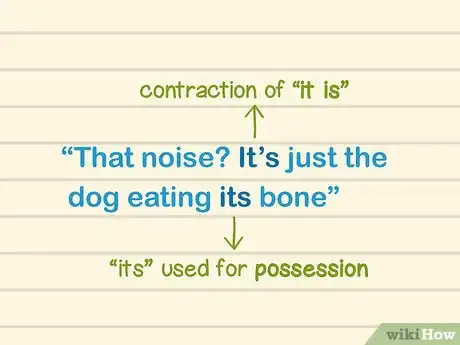
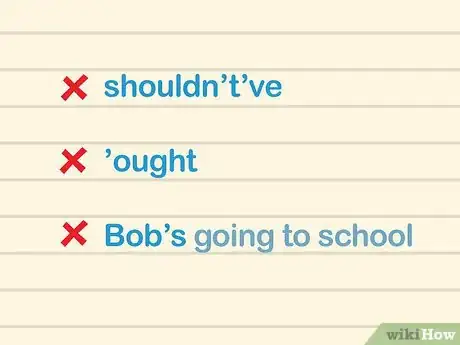
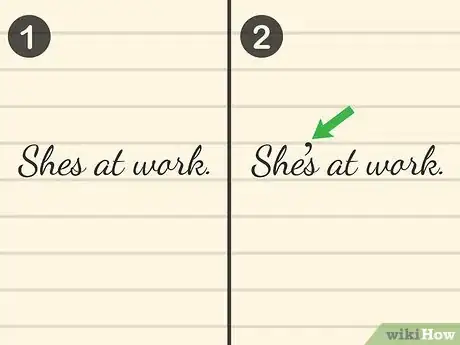

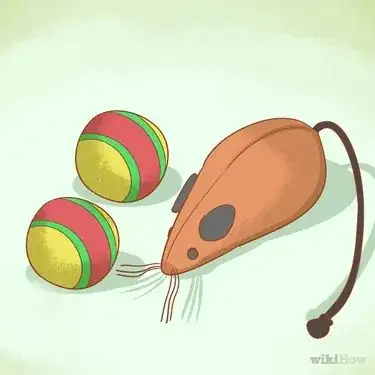





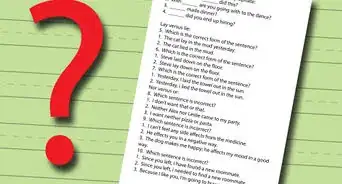
-Writing-Step-16.webp)
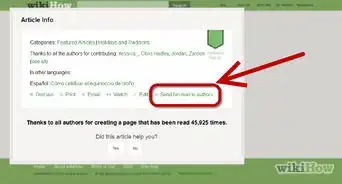
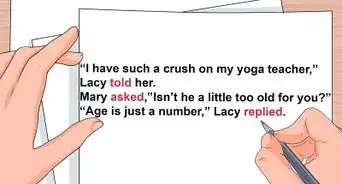
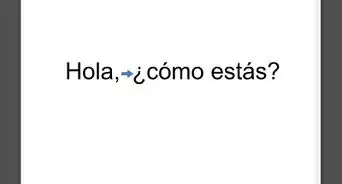
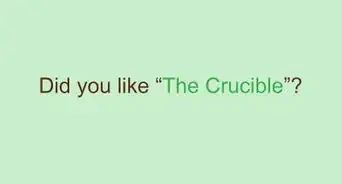
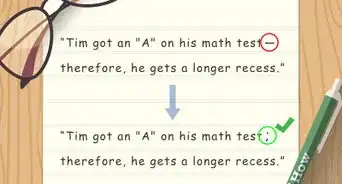

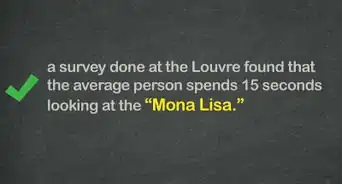
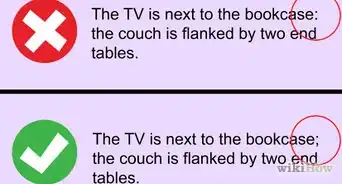
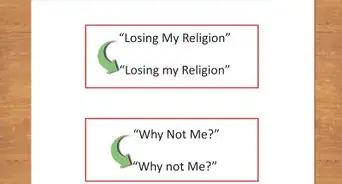









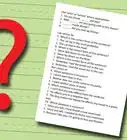
-Writing-Step-16.webp)





























